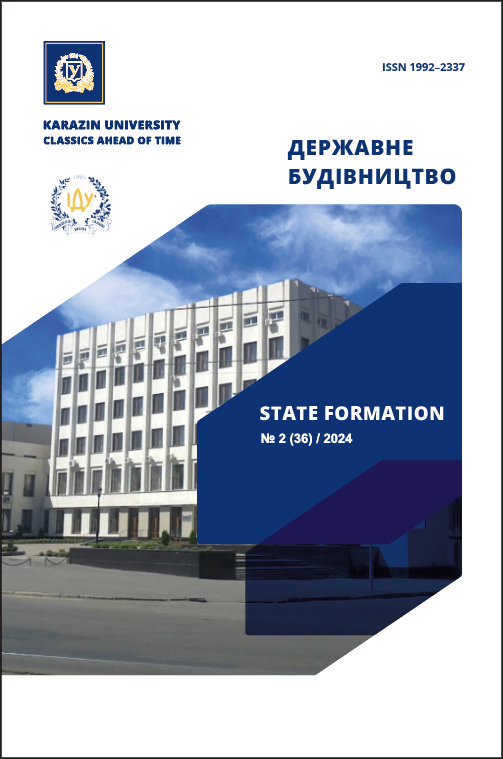Ensuring the stability of the revenue side of state budget under post-war emergency conditions: Ukrainian experience for the world.
Abstract
This article addresses the critical issue of ensuring the stability of the revenue side of Ukraine’s public finances in post-war emergency conditions. It analyses the performance of Ukraine’s fiscal system during 2022–2024, a period marked by unprecedented challenges, including significant GDP contraction, a sharp rise in budget deficits, infrastructure destruction, and extreme reliance on external financial assistance. Using an analysis of macroeconomic trends, structural transformations in the budget system, and crisis management mechanisms, the study substantiates the need for a systematic approach to assessing fiscal stability under the conditions of a wartime economy. The study’s aim is to identify the key factors contributing to the resilience of Ukraine’s public finances during wartime and to formulate recommendations for adapting these mechanisms to new global and security challenges. The research methodology combines structural-dynamic analysis, scenario forecasting, a systematic risk management approach, and policy analysis, using official data from Ukraine’s Ministry of Finance and international organizations. The fiscal stability assessment matrix developed in the article covers key evaluation aspects, including: budget revenue dynamics, effectiveness of crisis management measures, risk identification, structural transformations, long-term trend forecasting.
The findings indicate that Ukraine achieved stabilization of its budget system through a flexible combination of tax reforms, international assistance mobilization, temporary deficit monetization, and fiscal process digitalization. Tax revenues increased from 37.6% in 2022 to 48.5% in 2024, reflecting gradual economic recovery. However, the analysis identified significant structural risks, including excessive dependence on external assistance (up to 13.6% of budget revenues in 2024) and limitations of traditional revenue sources. The study emphasizes that achieving fiscal stability in the medium- and long-term requires several reforms: expanding the tax base through economic de-shadowing and innovative taxation mechanisms; optimizing intergovernmental fiscal relations by enhancing regional tax autonomy; creating an integrated system for fiscal risk management; introducing a medium-term budget framework to account for macroeconomic shocks. Comprehensive digitalization of the budget process to improve transparency and forecast accuracy. The research findings hold practical value for governments of other countries facing extreme economic challenges due to wars or other crises.
Downloads
References
National Institute for Strategic Studies (NISS). (2024). Overview of tools to support financial stability under martial law in Ukraine (November–December 2024). Kyiv: NISS. URL: https://surl.li/kvryrv
Bloomberg. (2023). Building fiscal resilience: Wall Street Week. URL: https://www.bloomberg.com/news/videos/2023-08-04/building-fiscal-resilience-lkx87jvh
CEPR. (2022). Reforming the European fiscal framework: Increasing compliance, not flexibility / W. Reuter, L. Feld. URL: https://surl.li/jicitv
European Fiscal Board. (2024). Annual Report 2024. Brussels. URL: https://surl.li/cwbbvp
Fall, F., Bloch, D., Fournier, J. M., & Hoeller, P. (2015). Prudent debt targets and fiscal frameworks. OECD Economic Policy Paper, 15, 1–47. DOI: https://doi.org/10.1787/5jrxtjmmt9f7-en
Gaspar, V., Eyraud, L., & Poghosyan, T. (2017). Fiscal politics in the Euro area. International Monetary Fund. URL: https://www.imf.org/en/Publications/WP/Issues/2017/03/23/
Fiscal-Politics-in-the-Euro-Area-44768
Heimberger, P. (2024). Fiscal consolidation and its growth effects in euro area countries: Past, present and future outlook. Wien. URL: https://surl.li/bmnvvx
International Monetary Fund (IMF). (2021). Fiscal policy for an uncertain world / Vitor Gaspar, Sandra Lizarazo, Paulo Medas, Roberto Piazza. URL: https://www.imf.org/en/Blogs/
Articles/2021/10/13/blog-fiscal-policy-for-an-uncertain-world
International Monetary Fund (IMF). (2022a). Fiscal Monitor, April 2022: Fiscal Policy from Pandemic to War. URL: https://www.imf.org/en/Publications/FM/Issues/2022/04/12/fiscal-monitor-april-2022
International Monetary Fund (IMF). (2022b). Fiscal Monitor: Helping People Bounce Back. Washington, D.C.: International Monetary Fund. URL: https://surl.li/gkbazs
International Monetary Fund (IMF). (2024a). Fiscal risk toolkit: Fiscal risk analysis and management. URL: https://surl.li/iudkei
International Monetary Fund (IMF). (2024b). Global Financial Stability Report. New York. URL: https://surl.li/ikrmgj
Ministry of Finance of Ukraine. (2023). Macro-Financial Review 2022–2024. URL: https://mof.gov.ua/en/macroeconomic_forecast_for_2022-2024-379
OECD/The World Bank. (2019). Fiscal resilience to natural disasters: Lessons from country experiences. Paris: OECD Publishing. https://doi.org/10.1787/27a4198a-en
Schick, A. (2013). Lessons from the crisis. OECD Journal on Budgeting, 12(3), 1–29. DOI: https://doi.org/10.1787/budget-12-5k47tb29wn6h
Tanzi, V. (1992). Fiscal Policies in Economies in Transition. New York: IMF. DOI: https://doi.org/10.5089/9781557751911.071 URL: https://surl.li/cmylpk
World Bank. (2024a). Ukraine rapid damage and needs assessment (Rdna3): February 2022 – December 2023. URL: https://surl.li/ozffip
World Bank. (2019). Fiscal resilien ce to natural disasters: Lessons from country experiences (Report Number 141358). Washington, D.C.: World Bank Group. URL: https://surl.li/dotast
World Bank. (2024b). A journey from post-conflict reconstruction to sustainable peace and development: Three decades of trusted partnership with Bosnia and Herzegovina. URL: https://surl.li/uedpsg
World Bank. (2024c). Building resilience in investment projects: The power of resilience rating system. URL: https://blogs.worldbank.org/en/climatechange/building-resilience-in-investment-projects--the-power-of-resilie
World Bank. (2024d). Global Economic Prospects 2024: Highlights from Chapter 4: Fiscal Challenges in Small States: Weathering Storms, Rebuilding Resilience. URL: https://surl.li/dpilca

